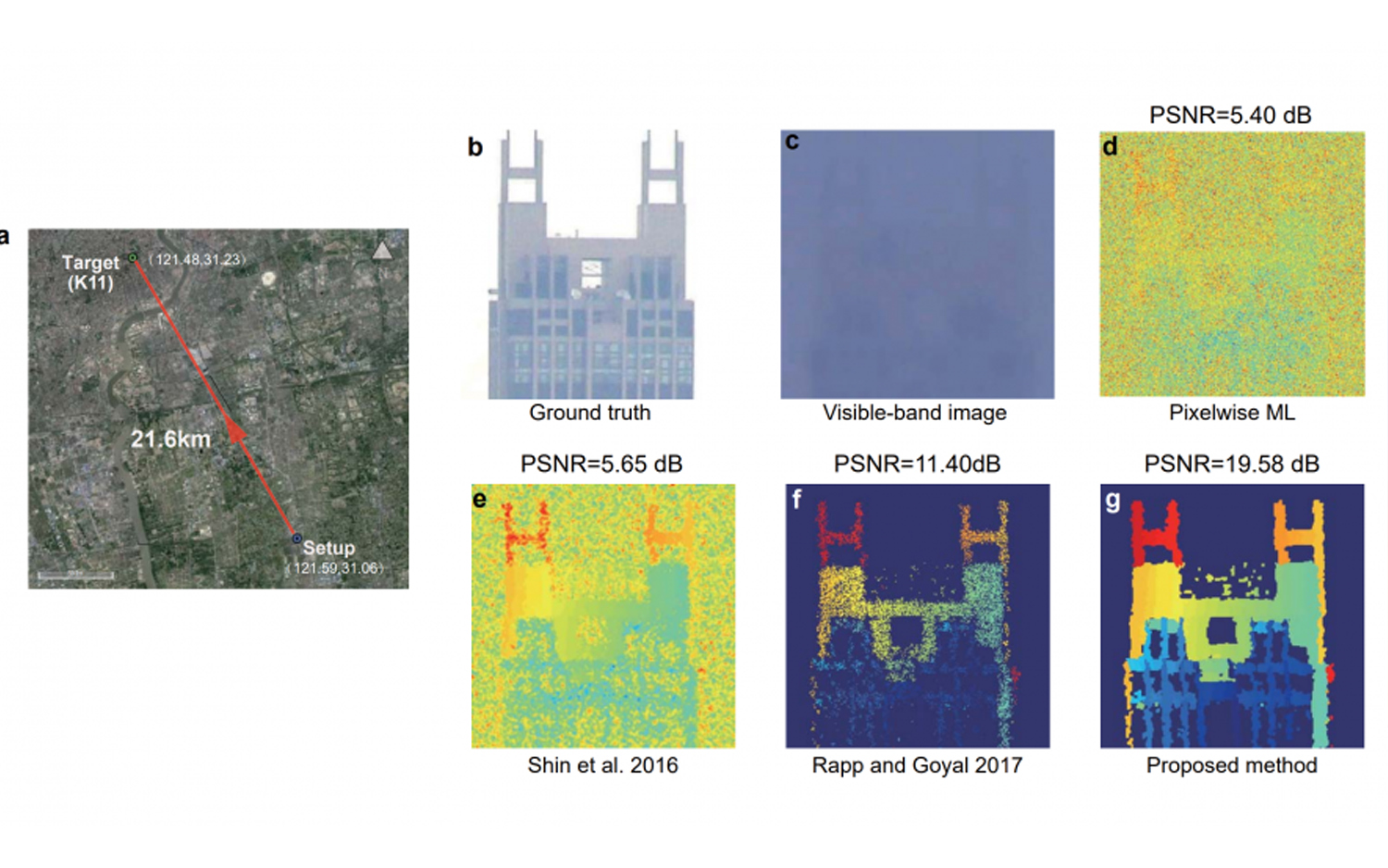Chinese Scientists Create Camera That Can Spy You 28 Miles Away, Even Through Smog
The camera is just the size of a shoebox and uses laser and artificial intelligence to capture images.
Chinese scientists have invented a new shoebox-sized camera system that can be used for surveillance, target recognition, and identification of anything 28 miles away. In fact, they specifically designed the camera to work in urban environments.

Researcher Zheng-Ping Li and his team at the University of Science and Technology of China in Shanghai have announced a new low-cost, compact camera technology that once again takes privacy to a new low, thanks to new laser imaging technologies and artificial intelligence.
Previous Lidar imaging technologies could roughly resolve subjects 10 miles away by bouncing a laser on a subject. But the new camera can photograph stuff at a record-breaking 28 miles away with unparalleled clarity. It doesn’t only capture 2D images — it can create 3D models of the subjects.
MORE: Seeing the Huawei P30 Pro 50x Zoom In Action Is Really Impressive
The scientists created this camera by using three new techniques.
The first one is called gating. Rather than indiscriminately bouncing a laser ahead and record the returning photons, gating sets a time limit. If you want to photograph something 15.32 miles, for example, you tell the computer to ignore any bounced photons that are not at that distance, focusing exclusively on what you want to capture. This greatly reduces the noise in previous long-range Lidar imaging technology.
The second enhancement is the laser itself, a 1550nm low-power infrared laser that won’t damage human eyes while being able to penetrate through any fog or smog. In China, where cities like Beijing suffer from this problem, it is a must-have feature. But that means that it will work anywhere else in the world without a glitch.
Get instant access to breaking news, the hottest reviews, great deals and helpful tips.
But even while the gating and infrared lasers greatly increase the density of captured photons and reduce the noise in comparison to other methods, the amount of points captured by the camera is still too low to generate a detailed image on their own. To solve that, Li and his colleagues developed a new artificial intelligence algorithm that pieces together the photons into a recognizable image.
The result is that, at 28 miles (45 kilometers), this could resolve details that are 23 inches (60 centimeters) in length. While this is not enough to pick up a face at that distance, it will do much better at closer distances. According to the paper, this is just a ‘newly opened path for high-resolution, fast, low-power 3D optical imaging over ultra-long ranges.’
According to the MIT Technology Review, the research team believes that technology can be used for “remote sensing, airborne surveillance, and target recognition and identification.”
And yes, if you are thinking that, in a couple of years, there will not be anywhere to hide, you are completely right.
Jesus Diaz founded the new Sploid for Gawker Media after seven years working at Gizmodo, where he helmed the lost-in-a-bar iPhone 4 story and wrote old angry man rants, among other things. He's a creative director, screenwriter, and producer at The Magic Sauce, and currently writes for Fast Company and Tom's Guide.

